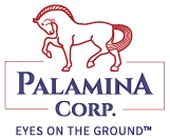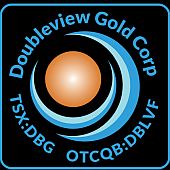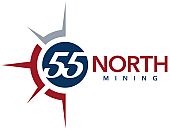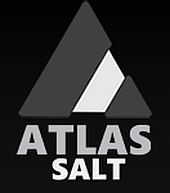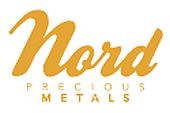 Coniagas, university look into Graal metallogenic work
Coniagas, university look into Graal metallogenic work
2025-08-20 19:13 ET – News Release
Mr. Frank Basa reports
UQAC RESEARCH PARTNERSHIP ADVANCES UNDERSTANDING OF NI-CU MINERALIZATION AT CONIAGAS’ GRAAL PROPERTY
Coniagas Battery Metals Inc. is co-operating with Universite du Quebec a Chicoutimi to investigate metallogenic processes responsible for nickel-copper sulphide formation at the company’s Graal property, located within the Lac-Saint-Jean anorthositic suite. Laurentia Exploration continues to manage exploration activities while advancing the permitting process.
This work represents a significant academic contribution to understanding Proterozoic anorthositic mineralization in Quebec’s Grenville province, deposits increasingly recognized for their critical and strategic metal content. The economic potential of nickel-copper deposits has been demonstrated by world-class discoveries like Voisey’s Bay in Labrador.
Research initiative
The master’s project at UQAC, led by Prof. S. Dare and Prof. R.-L. Simard, focuses on the northern margin of the Lac-Saint-Jean anorthositic suite in the Lac a Paul region hosting the Discovery, Gravi and MHY mineralized zones discovered on Coniagas’s Graal property.
Having previously mapped and studied petrographic and geochemical data from these showings in 2024, three members of the research team examined and sampled drill core from these zones at the company’s core shack last month. Their work on petrogeochemical characterization and mapping of anorthositic facies will help better define geological control and mechanisms responsible for the genesis and emplacement of these and other nickel-copper occurrences in the area, and will provide essential knowledge to improve exploration models across the region.
“This partnership exemplifies how academic research can accelerate mineral discovery,” stated Frank Basa, Coniagas chief executive officer. “UQAC’s work provides critical geological insights while we advance a project containing nickel, copper, cobalt and platinum group metals in one of North America’s most stable mining jurisdictions. Quebec offers clean hydroelectric power, established infrastructure and proximity to both traditional and emerging markets for these minerals.”
2025 exploration program
Key activities planned for the coming months include:
- Completion of airborne electromagnetic-magnetic survey with detailed coverage in areas of known prospectivity;
- Initiation of diamond drilling campaign;
- Integration of UQAC research findings into exploration targeting;
- Continued advancement of permitting and stakeholder engagement.
The collaboration between industry and academia at Graal demonstrates Quebec’s emergence as a centre for critical mineral research and development. As global supply chains reconfigure and demand for secure, ethically sourced minerals intensifies, projects with strong technical foundations and academic validation are increasingly valued by investors and end-users alike.
Academic research: a foundation for success
Partnerships with academic research institutions have proved invaluable in shaping the direction and effectiveness of exploration using:
- Refined models for magmatic sulphide formation and associated metal zonation;
- New interpretations of the local geotectonic setting, drawing on deep geophysical data;
- New applications of machine learning for anomaly detection in exploration data.
Currently, a team from Universite de Quebec a Chicoutimi is conducting detailed mapping and studying the petrogeochemical characterization of anorthositic facies and associated mineralization in the northern margin of the Lac-Saint-Jean anorthositic suite in the vicinity of the Discovery, Gravi and MHY Ni-Cu mineralized zones.
Proterozoic anorthositic massifs are abundant in the Grenville province of Quebec and host mineralization rich in critical and strategic metals.
The master’s project at the Universite du Quebec a Chicoutimi aims to better understand the metallogenic processes responsible for the formation of Ni-Cu sulphide mineralization associated with the Lac-Saint-Jean anorthositic suite. The study focuses on the northern margin of the SALSJ, more specifically in the Lac a Paul region, which hosts the Discovery, Gravi and MHY mineralized zones. These studies will provide key information to improving exploration models for such deposits (O. Bounour, S. Dare, R.-L. Simard and A. Moukhsil, 2025, Cartographie a l’aide du XRF portatif des facies de la marge nord de la Suite anorthositique de Lac-Saint-Jean associes a des mineralisations en Ni-Cu-Co, Province de Grenville (MB 2025-09)).
Strategic context
The global landscape for critical minerals continues to evolve rapidly. While electric vehicle applications remain important, demand drivers now encompass aerospace alloys, advanced manufacturing, telecommunications infrastructure and various industrial applications requiring high performance materials. Recent developments in copper-nickel alloy research highlight expanding applications beyond traditional uses. Quebec’s advantages for critical mineral development include:
- Established mining infrastructure and skilled work force;
- The Quebec plan for the development of critical and strategic minerals 2020-2025;
- Proximity to the St. Lawrence Seaway providing ocean access;
- Integration with North American manufacturing corridors;
- Stable regulatory environment with clear permitting pathways.
Commitment to environmental responsibility and community engagement
Incorporating academic research goes hand in hand with the company’s commitment to responsible resource development. Stakeholder engagement remains a cornerstone of the project, with regular consultations involving first nations communities and local governments. Academic partners are contributing to knowledge sharing and public education, fostering a culture of transparency and mutual respect.
Mr. Basa stated: “This is a new era of mineral exploration where science, technology and community values are equally prioritized. This co-operation between our exploration team and academic researchers is unlocking new opportunities and setting new standards for the industry.”
Dr. Renee-Luce Simard, Department of Applied Sciences, Universite du Quebec a Chicoutimi, said: “We hope that our findings will offer a clearer picture of the processes that formed copper and nickel deposits at Graal. This knowledge is crucial for guiding exploration and ensuring sustainable resource development.”
As the world accelerates toward a low-carbon future, the Graal Cu-Ni property stands at the intersection of innovative exploration and academic excellence. The continuing collaboration between industry and academia is not only advancing the science of mineral discovery but also ensuring that resource development proceeds with integrity and respect for the environment and local communities. The coming year promises to be a defining chapter in the project’s history, setting the stage for responsible resource development in a changing world.
Qualified person
The technical information reported in this news release was reviewed and approved by Maxime Bouchard, Geo, MSc (OGQ No. 1752), an independent qualified person as defined by Canadian National Instrument 43-101 standards. The qualified person has not completed sufficient work to verify the historical information on the property, particularly regarding historical drill results. However, the qualified person believes that drilling and analytical results were completed to industry standard practices. The information provides an indication of the exploration potential of the property but may not be representative of expected results.
About Coniagas Battery Metals Inc.
Coniagas is a Canadian junior mining company focused on nickel, copper and cobalt, and platinum group metals in Quebec. Coniagas’s strategy is to create value for shareholders through the development of its mineral properties, with the intention of developing Coniagas into a critical metal supplier to the electric vehicle market.
At its 100-per-cent-owned Graal project near Saguenay, Que., Coniagas has conducted successful exploration involving geophysics, as well as shallow drilling that hit mineralization in almost every hole. It has confirmed an open-pit deposit model at Graal along a six-kilometre strike length of high-grade nickel and copper with cobalt, platinum and palladium byproducts. The company plans in the near term to conduct additional drilling leading to the production of an NI 43-101 resource report, metallurgical testing and consultations with first nations. The Graal project and immediate work plan are outlined in detail in the “NI 43-101 Technical Report Graal Nickel & Copper Project, Saguenay-Lac-St-Jean, Quebec, Canada,” dated Jan. 17, 2024. The report is available along with other information at the company’s website.
We seek Safe Harbor.








